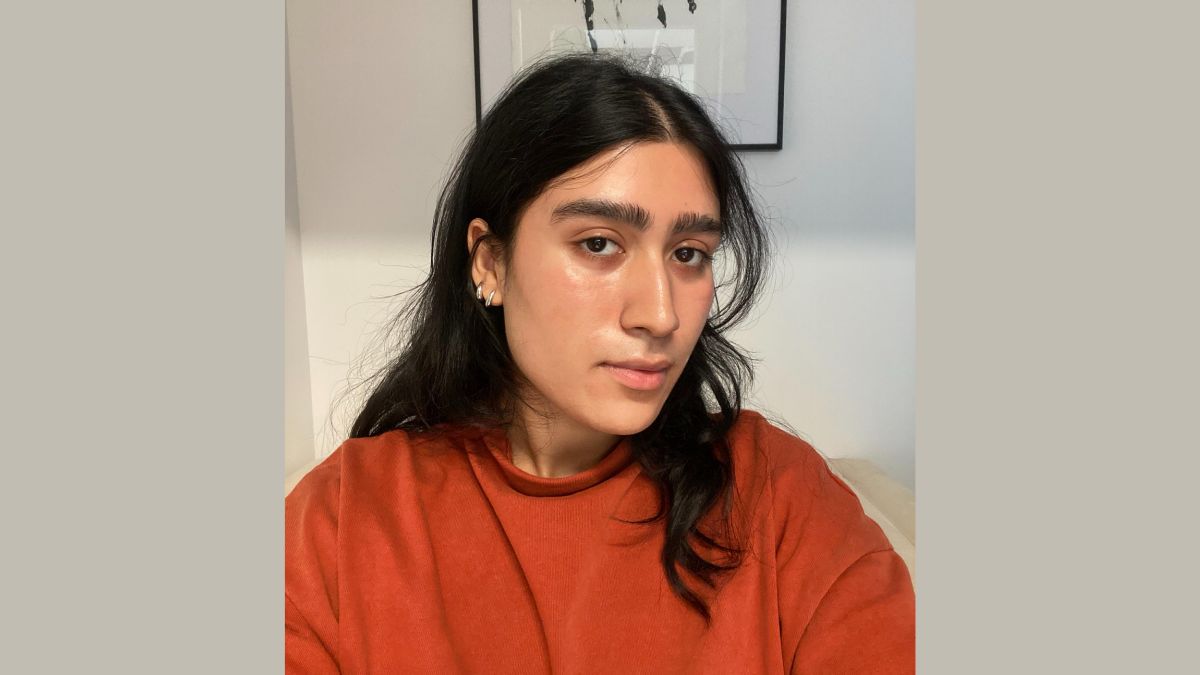Lifestyle
Interview with Seher Anand on Design, Culture, and Identity

Seher Anand is a visual designer whose work is deeply influenced by storytelling, cultural heritage, and identity. A graduate of Parsons School of Design with honors in Communication Design, she has worked on projects that explore themes of migration, displacement, and tradition through design. Currently based in New York and working as a visual designer at VMGROUPE, Seher brings a unique perspective to contemporary design by integrating elements of her Kashmiri heritage into her work. In this interview, she discusses her inspirations, her projects, and the role of design in preserving culture.
Seher, can you share how your Kashmiri heritage has influenced your journey as a visual designer?
Seher Anand: My Kashmiri heritage has deepened my curiosity for storytelling. I didn’t grow up there, but I’ve experienced it through the memories, emotions, and traditions shared by my family—the food, stories, people, and objects that shape cultural identity. This has made me more observant, allowing me to absorb and interpret details in a way that naturally informs my work as a designer.
Your project “Migrant Landscape” delves into themes of displacement and identity. What inspired this work, and how does it reflect your personal experiences?
Seher Anand: Moving away from home and working in New York made me think a lot about home and identity. Migrant Landscape came after projects like Disembodied Eyes, where I looked at satellite imagery of temporary settlements and urban spaces, and A View into the Valley, which explored Kashmiri handicrafts and the history objects carry. For many, identity is rooted in the idea of home—but what happens when that home is never truly established? This project explores how the world is designed to shape human movement and how displacement influences our sense of belonging.
Having graduated with honors in Communication Design from Parsons School of Design, how did your time there shape your design philosophy?
Seher Anand: Studying in a diverse city like New York broadened my creative process by exposing me to peers and professors from various backgrounds, each with unique approaches to design. While formal education provides structure, my philosophy was shaped more by my belief in what my work should represent. Being surrounded by people from different cultures helped me refine my own design philosophy, which is primarily driven by storytelling. Effective design should not only be visually compelling but also deliver a meaningful message.
As a visual designer at VMGROUPE in New York, how do you incorporate elements of your cultural background into your professional projects?
Seher Anand: I don’t think it’s always about intentionally incorporating visible elements—your cultural background naturally shapes how you see and approach design. That’s what makes working in an international team so valuable—everyone brings a different perspective on color, typography, and iconography. For me, it’s about being authentic in my work, sharing my perspective, and staying true to my own design instincts rather than mimicking a particular aesthetic.
Could you discuss the creative process behind your “Nazar Branding” project and its significance?
Seher Anand: With the rise of Ayurvedic skincare in the West, I noticed a disconnect—many brands leaned on traditional practices but presented them with minimal, Eurocentric aesthetics that didn’t feel authentic. With Nazar Branding, I wanted to challenge that by embracing a visual language rooted in South Asian culture. I explored rich colors, bold iconography, and expressive typography that reflect the vibrancy of Ayurveda while still feeling modern and relevant. The project reimagines what Ayurvedic beauty branding could look like if it fully embraced its heritage rather than adapting to Western design norms.
In your opinion, what role does design play in preserving and promoting Kashmiri culture in the global arena?
Seher Anand: Design serves as a bridge between tradition and contemporary narratives. Whether through editorial design that enables rich, guided storytelling or branding that reimagines cultural motifs, it helps preserve Kashmiri heritage while making it accessible to a global audience. It allows for a visual language that honors the past while evolving with the present.
What advice would you offer to emerging designers from Kashmir looking to make their mark internationally?
Seher Anand: Don’t be afraid to experiment—even if something doesn’t turn out the way you hoped, you’ll always learn from it. Also, don’t try to mimic someone else’s style or career path. Instead, study their process and make it your own. Most importantly, have a clear vision—whether your work is deeply meaningful or purely aesthetic, knowing your “why” will keep it from feeling empty.
What are your thoughts on the true culture of Kashmir, where diverse communities coexisted before the 1990s?
Seher Anand: My understanding of Kashmir’s true culture comes from stories passed down by people. The coexistence of diverse communities shaped its identity, influencing everything from language and literature to art and everyday life. When that coexistence fades, history risks being rewritten through a singular perspective. But storytelling, design, and art play a role in preserving these collective memories. While the past has changed, it remains a testament to an inclusive time—one that people can strive to rebuild in new ways.
Family plays an essential role in shaping an individual’s direction. How has your family influenced you?
Seher Anand: Family plays a huge role in shaping who you are, but it’s just one part of the picture. My family has greatly influenced my work ethic and openness, both in my professional life and personal experiences. At the same time, they’ve taught me the importance of independence, adaptability, and a willingness to keep learning.
It is natural to be influenced by someone and look up to them. Is there anyone who has inspired you throughout your journey?
Seher Anand: It’s natural to be influenced by or idolize someone, often because they’ve achieved something we aspire to, and we believe following their path will lead us there. Or, perhaps it’s the idea that striving for “more” brings us closer to an “ideal” version of ourselves. For me, I’ve always looked up to my parents. They are both incredibly strong individuals, each with their own unique perspective. They are confident, opinionated, and kind—qualities I admire.
What does Kashmiri culture mean to you, and how has it shaped your personal and professional journey?
Seher Anand: Kashmiri culture, to me, is a mix of beauty, resilience, and deep traditions. It’s in the simple things like sharing a cup of kahwa, where food becomes a symbol of togetherness, and in the crafts—clothes, jewelry, and art—that are passed down through generations. But it’s also about the people—their strength, unity, and how they carry their identity with pride. Even though I wasn’t raised in Kashmir, I feel deeply connected to its stories and traditions through my mother’s side of the family. It’s not just something I admire but a part of who I am.
-

 Entertainment10 months ago
Entertainment10 months agoSumeet Tappoo: The soulful voice bringing harmony to hearts and hope to humanity
-

 Entertainment9 months ago
Entertainment9 months agoShafaq Khan: Award-winning director redefining the art of storytelling in Indian cinema
-

 Books11 months ago
Books11 months agoInterview with acclaimed author Berjis Desai on his latest crime thriller, “Murder at the Racecourse”
-

 Business7 months ago
Business7 months agoInterview with Lakshmi Shridhar on Women’s Leadership and Innovation in the Hospitality Industry
-

 Lifestyle7 months ago
Lifestyle7 months agoInterview with Dr. Mansi on Mindful Leadership and Personal Growth
-

 Food & Fitness7 months ago
Food & Fitness7 months agoInterview with Tina Scott Parashar on the Evolution of Cake Design and Empowering Women in the Industry
-

 Entertainment2 weeks ago
Entertainment2 weeks agoNikita Anand, actress, model and television presenter, shares her secrets to success
-

 Business4 months ago
Business4 months agoThe Agentic Future: How DaveAI is reimagining human-AI interaction






